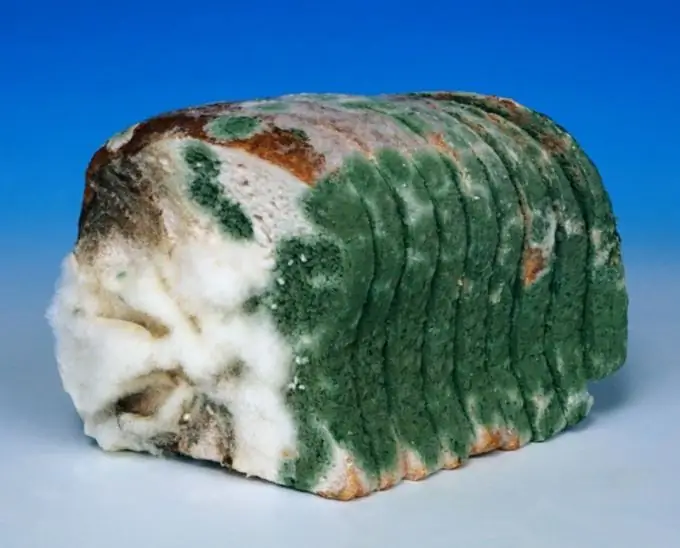- Author Nora Macey [email protected].
- Public 2023-12-16 10:17.
- Last modified 2025-01-23 08:48.
Before you find out how dangerous mold is to the human body, you need to understand what mold is. Mold is a special type of microscopic fungus that multiplies on various products (both animal and plant origin). Scientists count a huge number of varieties of these mushrooms (from 10,000 to 300,000).

What is mold
Mold differs from bacteria and yeast in that it consists of a larger number of cells. These cells form extended filaments called hyphae. The hyphae, intertwining with each other, create a mycelium. Spores are located at the ends of some hyphae. It is the spores that determine the shade of the mold. Spores are spread by air, like plant seeds in the wind. Molds are often accompanied by various bacteria.
It is known that some types of mold can cause allergies, breathing problems, various respiratory diseases; under special conditions, mold can release substances that are poisonous and toxic to the human body.
Should you eat moldy food even if you cut it off? To do this, you need to know what happens to the product on which the mold is formed.
You need to understand that mold is not only on the surface of food. Gray and green fluffy dots on bread, pasta, white bloom on cheeses, velvety circles on fruits are just a small part of the iceberg. If the mold appears to be abundant, it has spread deep into the food.
Microtoxins
The most dangerous types of microtoxins are those that appear on grains and nuts, but they can also appear on juice from grapes, celery, etc. The most dangerous among the known microtoxins, scientists recognize aflatoxin. And statistics show that more than 25% of the world's crops are contaminated with types of toxins hazardous to human health.
Aflatoxins are believed to be capable of causing cancer in the human body. They are most commonly found on grains or peanuts. Toxicologists around the world are working to prevent the contamination of animal feed and products from aflotoxicosis.
There is also a healthy mold. It is used in the production of cheese. For example, the world famous cheeses Roquefort, Stilton, Gorganzola with blue mold are obtained by introducing the spores of Penicillium roqueforti. These types of mold are absolutely safe for human health.
Is it okay to eat a product contaminated with mold
If mold has formed on a thermally processed product (meat, poultry, cooked sausage), then these products should be thrown away. In addition to the mold itself, various pathogenic bacteria can form there.
You also need to throw it away if mold appears on soft fruits, yoghurts and sour cream, preserves and jam, soft cheese, cottage cheese, peanut butter, legumes, bread, pastries, mushrooms.
You can only cut off mold (at least 3 cm of product) from hard cheese or hard fruits / vegetables. In all other cases, it is better to refrain from eating spoiled foods.






